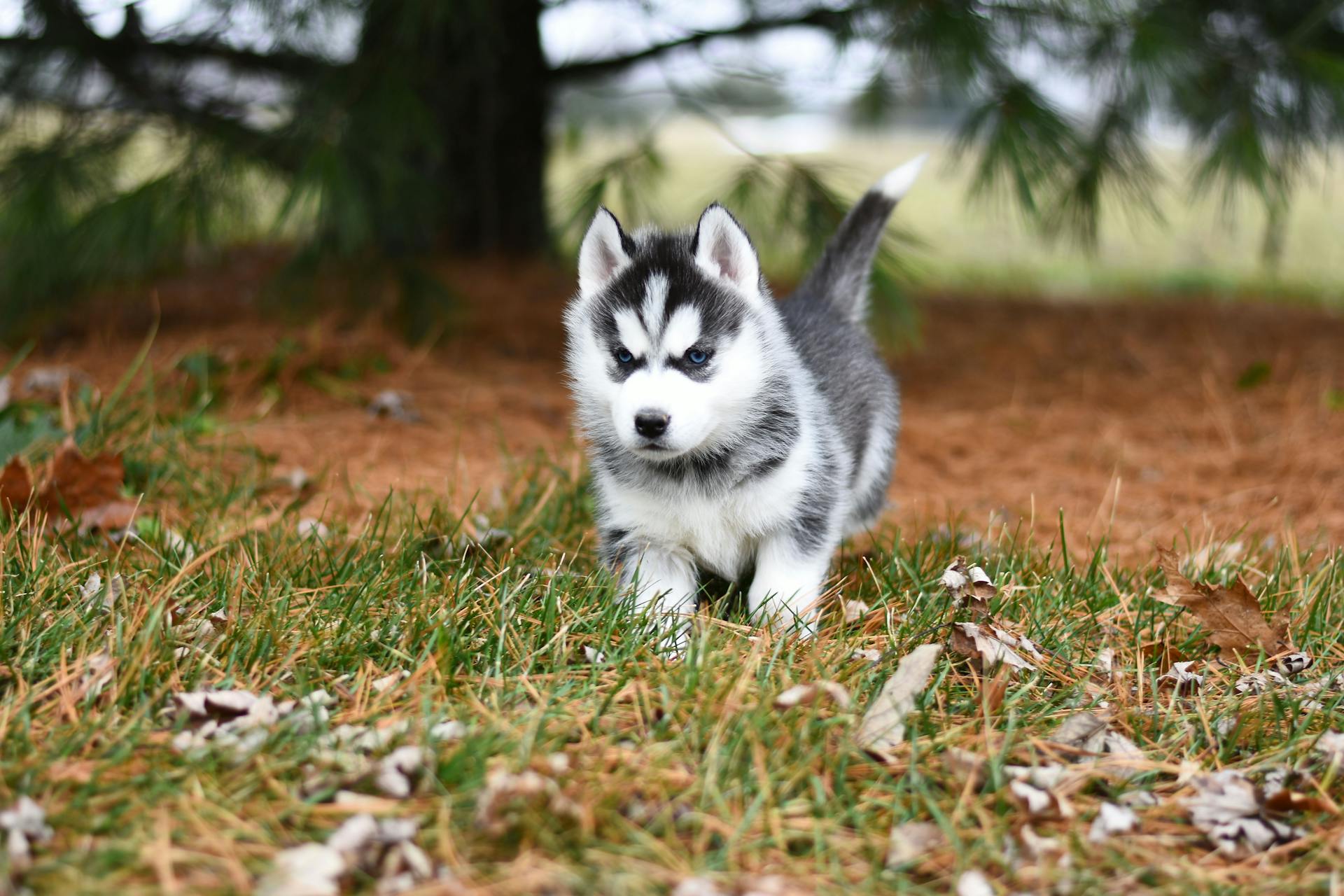
Husky dogs are originally from Siberia, where they were bred to thrive in the harsh, cold climate. They have a thick double coat that keeps them warm in temperatures as low as -50°C.
Their ancestors were used by the Chukchi people to pull sleds and hunt, making them well-suited to the rugged terrain and icy conditions of Siberia. They were also fed a diet rich in fat and protein to help them survive the harsh winters.
Huskies are built for endurance, with a unique gait that allows them to conserve energy while pulling sleds. They can run for miles without getting tired, making them perfect for long-distance travel in the Arctic.
Their ability to adapt to cold climates is due in part to their genetic makeup, which includes a mutation that allows them to produce more brown adipose tissue, a type of fat that helps to keep them warm in cold temperatures.
Here's an interesting read: How Cold Can Siberian Huskies Handle
Breed Data
Husky dogs are originally from northeastern Asia, bred by the Chukchi people. They're part of the working breed group.
These dogs are relatively small, with a height at the withers of 20-24 inches (51-61 cm). Their weight is also moderate, ranging from 35-60 pounds (16-27 kg).
Their lifespan is around 12-14 years, which is a good amount of time to enjoy their company.
Developed as Working Dogs Over Thousands of Years
Siberian Huskies were developed as working sled dogs by the Chukchi people over thousands of years. The harsh climate of the Siberian peninsula, where winds can reach 100 miles per hour and temperatures can drop to 100 degrees below zero, made the dogs a crucial part of their survival.
The Chukchi people relied on teams of up to 20 dogs to pull their sleds out onto the ice in search of food. Their lives and culture revolved around the dogs, who played a central role in their daily existence.
Explore further: Lifespan for Siberian Huskies
Husky Care and Environment
Huskies require a nutritious diet that's suitable for their age, and feeding them the right amount per meal is crucial to prevent weight gain and obesity.
They need plenty of exercise, and activities like running, jogging, hiking, and skijoring are great options - just be aware that not all Huskies enjoy swimming.
A fenced-in yard is a must, and electric fences aren't suitable because Huskies can jump over them. A reasonably high fence that can't be dug under is the way to go.
Never leave your Husky unattended or for long periods, or you might come back to a yard full of holes and a possibly escaped dog.
Consider reading: Can T Live without My Dog?
Care
Huskies need a nutritious diet that's right for their age, so make sure to feed them the recommended amount per meal to avoid weight gain and obesity.
A healthy meal plan is just the beginning - Huskies require plenty of exercise to stay happy and healthy. Running, jogging, hiking, and skijoring are all great options.
If you have a Husky, a fenced-in yard is a must. Electric fences won't work because Huskies can jump over them and dig under them too.
Never leave your Husky unattended in the yard, or you'll likely come back to holes dug up and a possibly escaped dog.
Readers also liked: Huskies Good Apartment Dogs
Siberian Natural Cleanliness
Their coats are naturally protected against cold weather, thanks to their dense fur.
Siberian Huskies don't require any clipping or trimming, making their grooming needs relatively simple.
The coat does have a shedding period at least once a year.
Frequent brushing during that time can help keep shedding under control.
Featured Images: pexels.com


